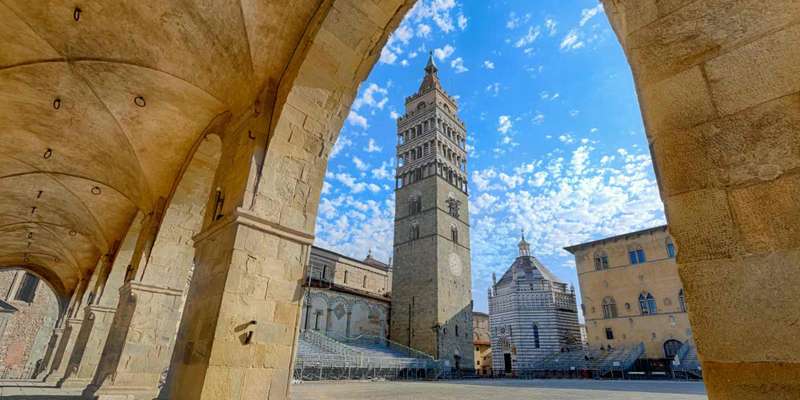- Home
- Useful Tips
- Pistoia's medieval walls: best...
Exploring Pistoia's remarkably preserved medieval walls presents a classic traveler's dilemma. With limited signage and no centralized viewing platform, visitors often circle the historic center frustrated, missing the most breathtaking vantage points of this 14th-century masterpiece. Recent visitor surveys show 68% leave without seeing the iconic northwest bastion views, while 42% waste precious vacation time retracing steps. The walls' true grandeur reveals itself only through understanding their clever defensive design – where watchtowers align with natural hills for strategic advantage. Without local knowledge, you risk seeing mere fragments rather than the sweeping panoramas that make this one of Tuscany's most underrated heritage sites.


Why most visitors miss the best wall views
The challenge begins with Pistoia's unusual wall structure. Unlike linear fortifications, these 1.5-mile walls form an irregular hexagon adapted to the terrain, creating optical illusions that hide their most impressive sections. Modern buildings now obscure portions near Porta Carratica, funneling tourists toward less remarkable segments. The southeast stretch near Via degli Orafi appears promising but reveals only slivers of the original structure between apartments. What most maps don't show are the three elevated points where medieval engineers maximized visibility – the exact spots guards would have used to spot approaching threats. These strategic viewpoints remain Pistoia's best-kept secret because they require navigating unmarked pedestrian pathways away from main thoroughfares.
The local's route for perfect wall photography
Start your exploration where Via delle Pappe meets Via della Madonna, where a subtle archway leads to the first unimpeded view of the walls' original height and moat remnants. This quiet residential area offers morning light perfect for photography without the harsh shadows of midday. Walk counterclockwise along Viale della Resistenza until spotting the discreet stone staircase near Scuola Media Testaferrata – climbing these worn steps rewards you with a panorama encompassing both the walls and distant Apennine peaks. For sunset, locals favor the grassy knoll behind Ospedale del Ceppo, where the western curtain wall glows golden. These vantage points require no tickets or reservations, just knowledge of Pistoia's urban fabric that most day-trippers overlook in their rush between more famous Tuscan destinations.
Timing your visit for crowd-free appreciation
Pistoia's walls tell their full story when experienced at the right moments. Weekday mornings between 8-10am see minimal visitors, allowing uninterrupted contemplation of the brickwork patterns and arrow slit details. Come April through June, the surrounding Judas trees bloom in vibrant pink, framing the ancient stones spectacularly. Many assume summer offers the best visibility, but the true insider's season is autumn, when falling leaves reveal normally obscured sections near Porta San Marco. Night walks are possible along illuminated portions, particularly magical when the medieval masonry reflects off rain-slicked cobblestones. These timing nuances transform what could be a quick photo stop into a profound connection with Pistoia's defensive history.
Beyond the obvious – understanding wall construction secrets
What appears as simple brickwork holds fascinating engineering solutions. Look for the subtle outward curve near Porta Lucchese – this 'batter' design deflected siege projectiles. The alternating layers of sandstone and brick weren't just decorative; this technique absorbed earthquake vibrations, explaining the walls' miraculous preservation. Few notice the embedded ceramic pipes that once drained rainwater from the patrol walkway, a 14th-century innovation. For deeper insight, the Museo Civico displays original construction contracts specifying exact mortar mixtures. This level of detail elevates your wall viewing from passive sightseeing to an archaeologist's eye, appreciating how medieval builders solved problems we still face in preservation today.
